The ARM vs x86 Wars Have Begun: In-Depth Power Analysis of Atom, Krait & Cortex A15
by Anand Lal Shimpi on January 4, 2013 7:32 AM EST- Posted in
- Tablets
- Intel
- Samsung
- Arm
- Cortex A15
- Smartphones
- Mobile
- SoCs
Cortex A15: RIABench
The RIABench story isn't any different from the other tests, although peak power consumption is slightly lower for the Cortex A15 here. The gap between it and Atom/Krait remains quite large. The big leap in performance does come at a real cost in power consumption.
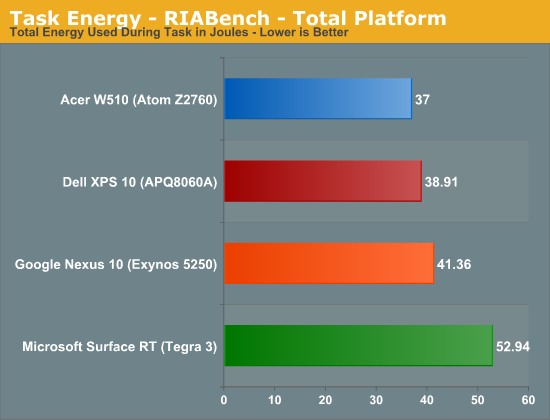
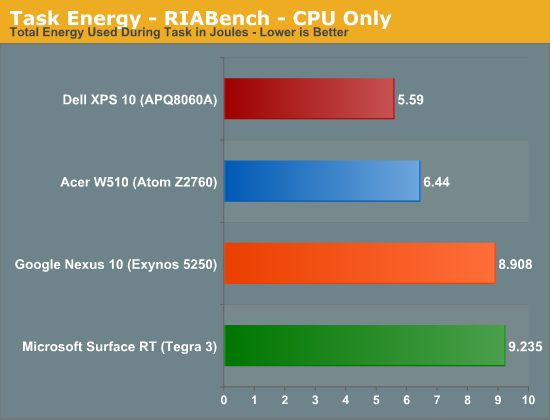
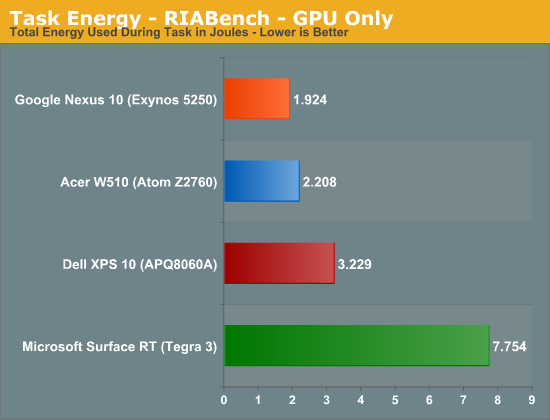
RIABench - Max, Avg, Min Power
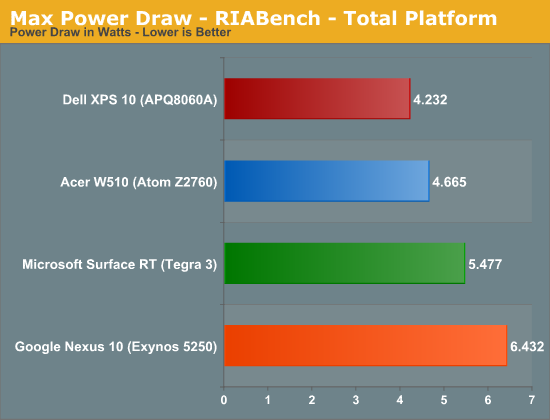
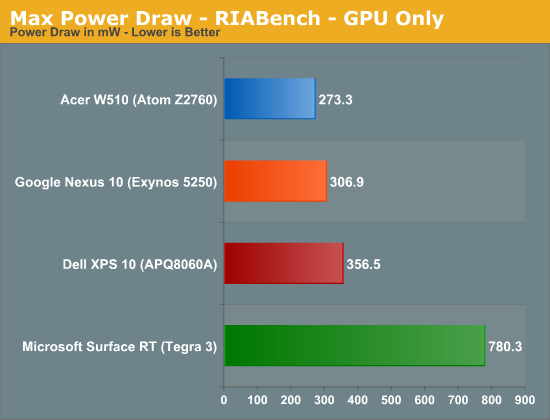
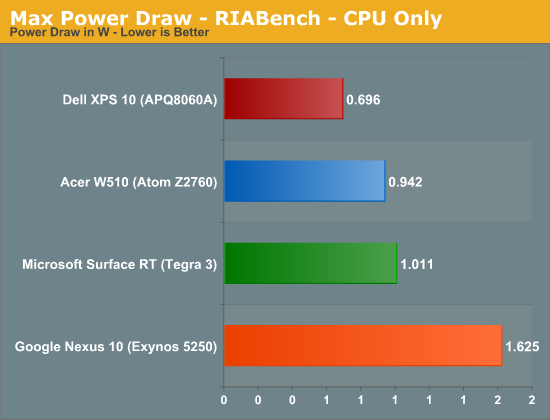
Average Power

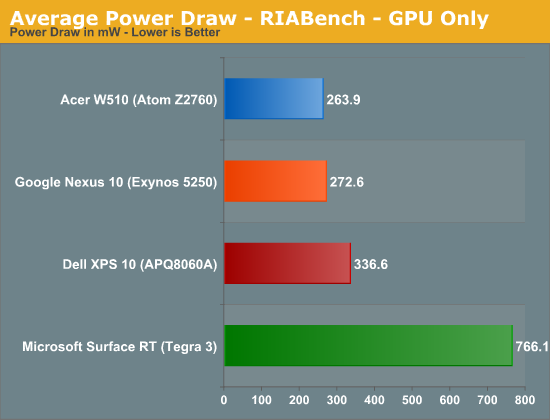
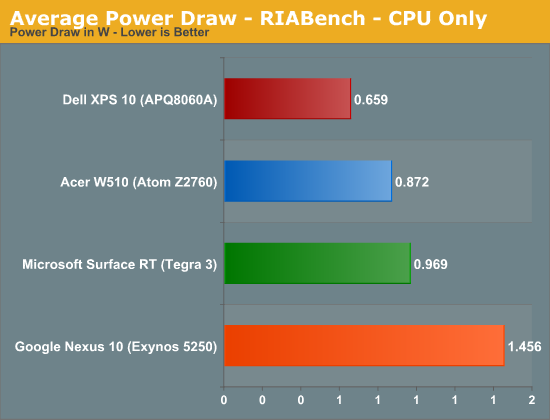
Minimum Power
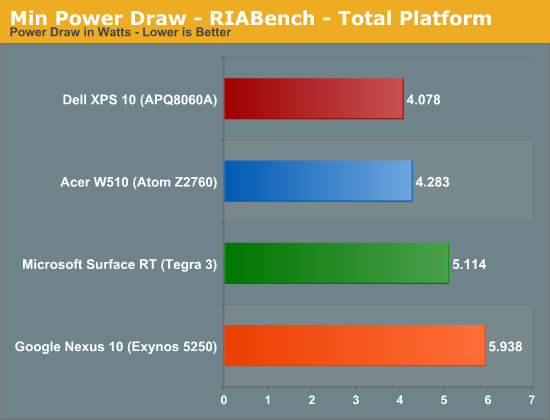

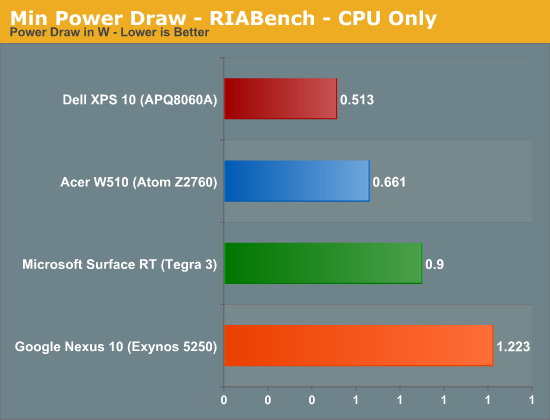


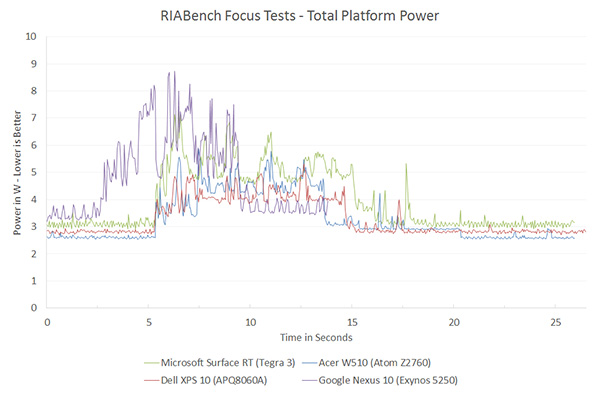
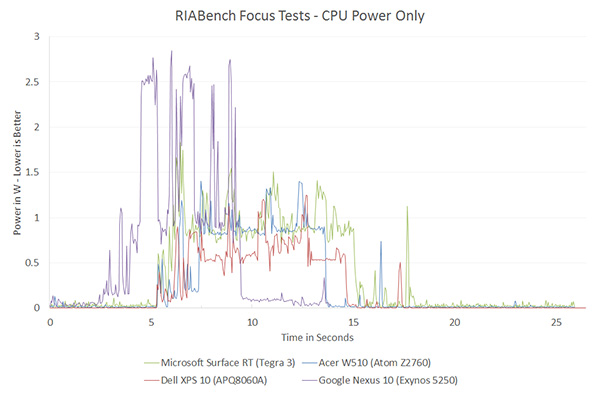
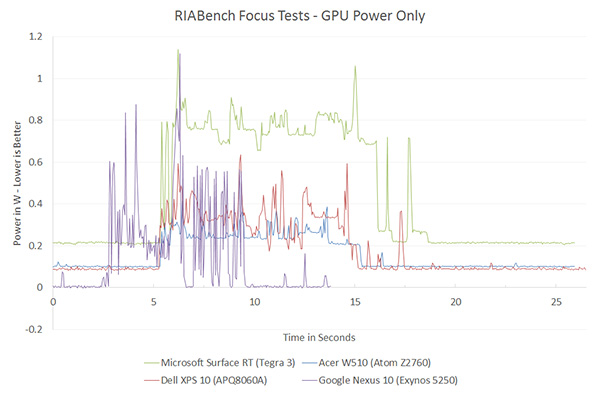








140 Comments
View All Comments
powerarmour - Friday, January 4, 2013 - link
So yes, finally confirming what anyone with half a brain knows, competitive ARM SoC's use less power.apinkel - Friday, January 4, 2013 - link
I'm assuming you are kidding.Atom is roughly equivalent to (dual core) Krait in power draw but has better performance.
The A15 is faster than either krait or the atom but it's power draw is too much to make it usable in a smartphone (which is I'm assuming why qualcomm had to redesign the A15 architecture for krait to make it fit into the smartphone power envelope).
The battle I still want to see is quad core krait and atom.
ImSpartacus - Friday, January 4, 2013 - link
Let me make sure I have this straight. Did Qualcomm redesign A15 to create Krait?djgandy - Friday, January 4, 2013 - link
No. Qualcomm create their own designs from scratch. They have an Instruction Set licence for ARM but they are arm "clones"apinkel - Friday, January 4, 2013 - link
Sorry, yeah, I could have worded that better.But in any case the comment now has me wondering if I'm off base in my understanding of how Qualcomm does what it does...
I've been under the impression that Qualcomm took the ARM design and tweaked it for their needs (instead of just licensing the instruction set and the full chip design top to bottom). Yeah/Nay?
fabarati - Friday, January 4, 2013 - link
Nay.They do what AMD does, they license the instruction set and create their own cpus that are compatible with the ARM ISA's (in Krait's case, the ARMv7). That's also what Apple did with their Swift cores.
Nvidia tweaked the Cortex A9 in the Tegra 2, but it was still a Cortex A9. Ditto for Samsung, Hummingbird and the Cortex A8.
designerfx - Friday, January 4, 2013 - link
do I need to remind you that the Tegra 3 has disabled cores on the RT? Using an actual android device with Tegra 3 would show better results.madmilk - Friday, January 4, 2013 - link
The disabled 5th core doesn't matter in loaded situations. During idle, screen power dominates, so it still doesn't really matter. About all you'll get is more standby time, and Atom seems to be doing fine there.designerfx - Friday, January 4, 2013 - link
The core allows a lot of different significant things - so in other words, it's extremely significant, including in high load situations as well.That has nothing to do with the Atom. You get more than standby time.
designerfx - Friday, January 4, 2013 - link
also, during idle the screen is off, usually after whatever amount of time the settings are set for. Which is easily indicated in the idle measurements. What the heck are you even talking about?